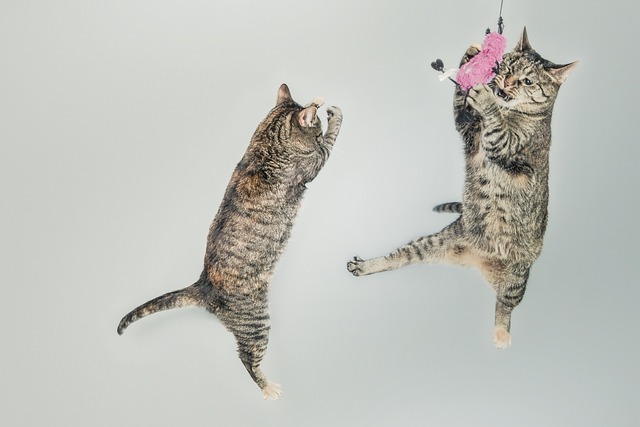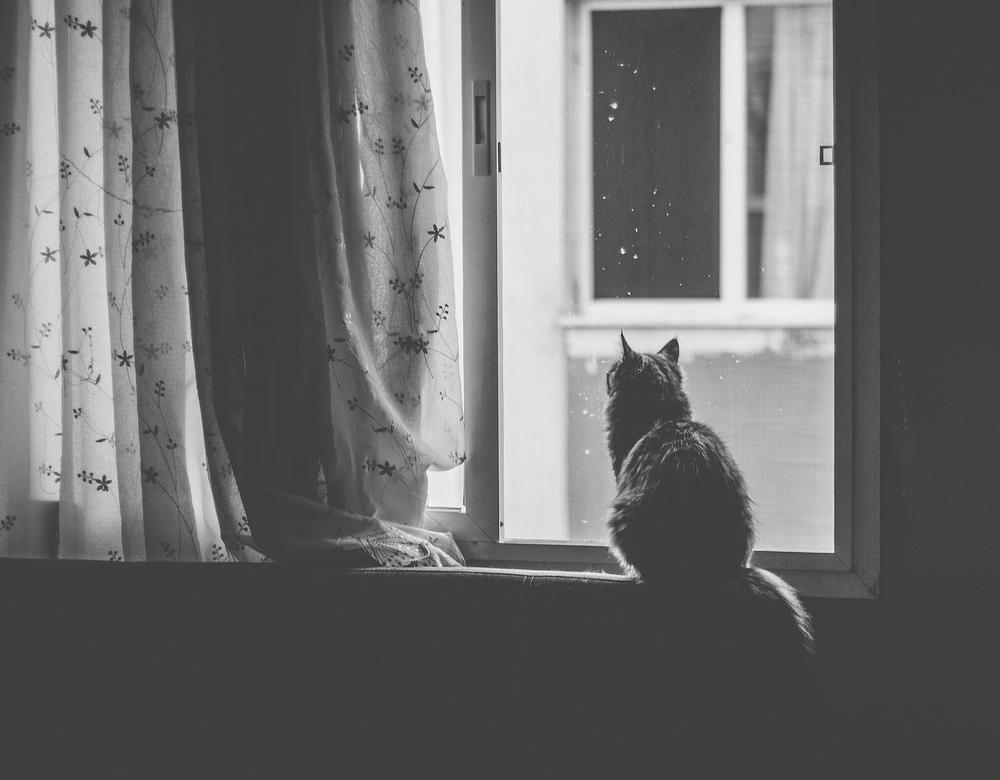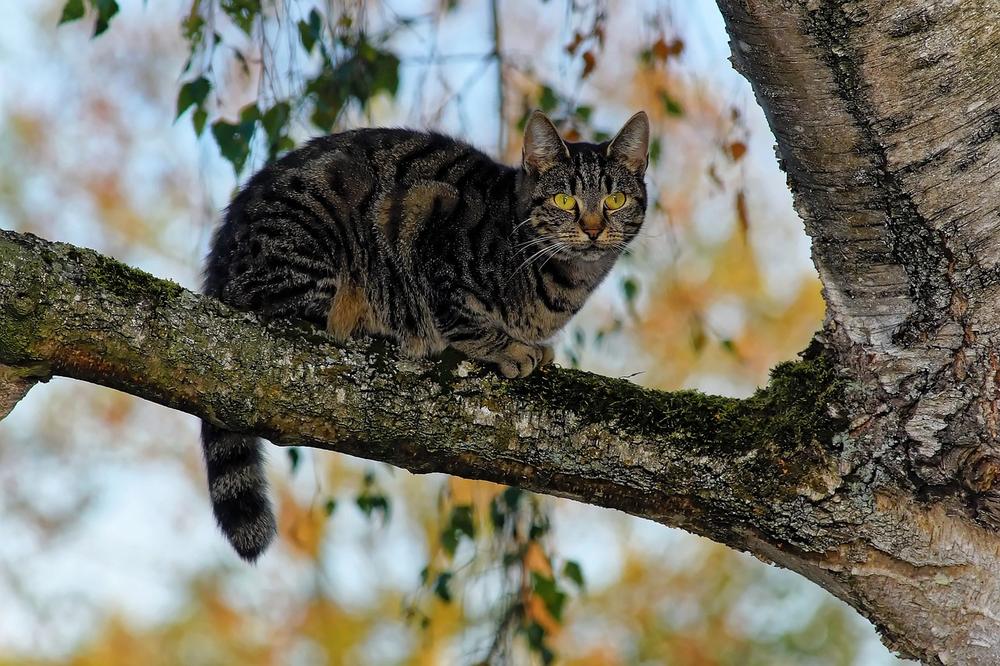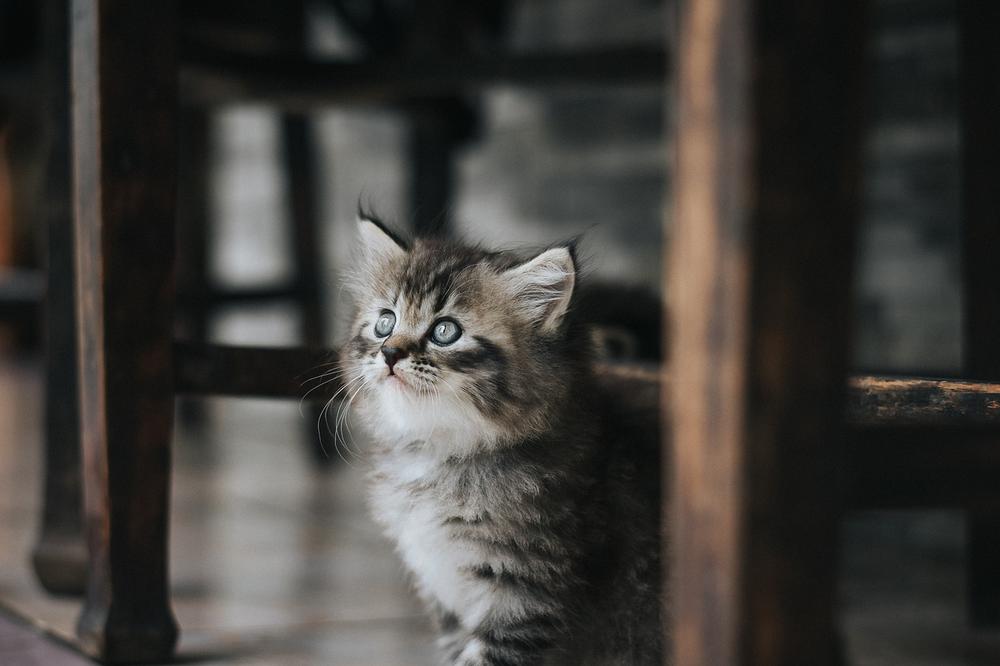How to Keep You Cat From Jumping After Surgery (Easy Tricks)

So your fur baby just had surgery, huh?
Poor thing must be feeling a bit worse for wear 😔.
But here's the thing - if you don't take the right precautions, things could go from bad to worse.
I'm talking about your cat taking a leap of faith, only to end up with an extra trip back to the vet.
And trust me, that's the last thing you want right now.
But hey, don't fret just yet!
In this I Care for Cats guide, I'll spill the beans on how to keep your little daredevil from jumping post-surgery.
Let's begin, shall we?
How to Keep Your Cat From Jumping After Surgery: Probable Measures
Here's what you can do to ensure your cat doesn't jump after surgery:
- Give them a cozy recovery spot, like a comfy crate with soft bedding. This will help avoid any injuries from jumping.
- Keep your cat in a small room or cage to reduce stress on their wounds. 🐾
- Limit their freedom and keep them indoors for about a week after surgery. It'll help their healing process.
- Use toys that stimulate their mind without exerting too much energy.
- Rearrange your house to prevent any energetic behaviors that might lead to jumping.
- Keep a close watch on your cat's movements and make sure they're not in pain.
- Keep the recovering cat away from other pets, especially other cats, so they don't get too active and harm the incision.
- Create a calm environment by reducing loud noises and giving them extra love and cuddles.
- Consider using calming pheromones or swapping beds and blankets between pets to create a peaceful atmosphere.
Your cat's recovery after surgery will be safe and free of complications if you follow these instructions.
And while these measures will undoubtedly help keep your furry friend safe and comfortable during their recovery, if you're looking for even more tips on how to prevent jumping after surgery, I highly recommend checking out my article on How to Keep Your Cat From Jumping After Surgery.
In this comprehensive guide, you'll find expert advice and additional strategies to ensure a smooth and successful healing process for your beloved cat.
Can I Let My Cat Move Around the House Normally?
If you're wondering about the best way to let your cat move around after surgery, here are some practical tips to consider:
- Use pet gates or temporary barriers to block off areas like stairs and high surfaces to prevent jumping-related injuries.
- After surgery, provide strict rest for your cat to promote proper healing of their wounds.
- Keep your cat indoors for approximately ten days following surgery to minimize the risk of accidents.
- If you choose to allow your cat outside during recovery, supervise them closely to ensure they don't engage in any jumping that could lead to further injury.
- In cases of orthopedic surgeries, crate rest may be necessary. Make sure the crate is appropriately sized and includes space for food and water dishes.
By adhering to these recommendations, you can assist in ensuring a seamless recuperation for your cat while also protecting them against any potential dangers. 😺

And now, let me offer you some additional tips to create an optimal healing environment for your cat post-surgery!
Can I Let My Cat Use Her Cat Tree as Normal?
If you want your cat to recover smoothly using her cat tree, here are 10 tips for you:
- Take away the super exciting toys or features for now.
- Replace them with more chill enrichment items.
- When you snuggle with your cat, don't disturb the area where she had surgery.
- Put the cat trees on their sides or cover them with blankets so that she doesn't climb or jump on them.
- Make the environment safe by removing tempting spots for her to perch on.
- Keep her in a room without any high surfaces.
- Keep an eye on her while she interacts with the cat tree at first.
- Slowly allow her back to her cat tree over time.
- Pay attention to her behavior and make sure she's comfortable.
- If you have any concerns or questions, talk to your vet.
Let your cat safely recover and continue her enjoyment of the cat tree by following these instructions. 💪

And now, let's turn our attention to another crucial aspect of your cat's recovery...
Ensuring their bathroom needs are met properly.
Can My Cat Use the Litter Box Normally After Surgery?
Give your cat easy access to multiple litter boxes throughout your home.
Place them on each floor, reducing the need for stairs or long distances during their recovery.

This is crucial because after surgery, your furry friend needs to pass urine and feces without strain.
To keep infections at bay, it's best to use shredded paper as litter instead of gritty substances that could contaminate the incision site.
Make your cat's recovery easier by providing them with convenience and cleanliness - a small gesture that goes a long way in aiding their healing process.
Can My Cat Eat Normally After Surgery?
After surgery, you should consider your cat's feeding habits.

Here are some tips on how to handle their meals:
- Offer smaller and more frequent meals to ease digestion.
- Place the food on the ground to prevent any jumping or climbing.
- Consider special recovery diets if suggested by your veterinarian.
- To avoid nausea or vomiting, offer smaller portions of food at first.
- Start with something light, like chicken or fish, and gradually increase portion sizes.
- If your cat's appetite doesn't return within 48 hours, contact your vet as it could indicate a problem.
- General anesthesia can cause temporary sleepiness, shakiness, and loss of appetite.
Each cat is different, so always consult your veterinarian for specific instructions regarding post-surgery feeding.
Does It Matter if Cats Lick Their Wounds After Surgery?
| Topic | Information |
|---|---|
| Problem | Cats have a natural instinct to lick their wounds after surgery, which can slow down the healing process |
| Solutions | Bitter-tasting solutions can be applied to wounds to deter licking, biting, and scratching. , Elizabethan collars can be used to prevent cats from reaching their surgical wounds. , Inflatable collars provide a comfortable alternative to prevent licking and scratching. , Cones are effective in restricting the cat's access to surgical sites. |
| Benefits | Prevents infection caused by excessive licking , Supports faster healing after surgery , Minimizes the risk of damage to surgical wounds , Reduces the need for additional medical interventions |
| Considerations | Bitter-tasting solutions may need to be reapplied periodically , Cats may initially resist wearing collars or cones , Regular monitoring is essential to ensure the cat's comfort and prevent complications , Consult with a veterinarian for personalized recommendations |
| Additional Tips | Create a calm and safe recovery space for your cat , Provide comfort through soft bedding and familiar items , Keep the cat entertained with interactive toys and puzzles , Administer any prescribed medications as directed by the veterinarian |
| Conclusion | While cats may have the natural instinct to lick their wounds, using various techniques such as bitter-tasting solutions, collars, and cones can effectively deter licking and promote a smooth recovery after surgery. By implementing these measures, you can help prevent infections, support faster healing, and ensure your cat's overall well-being during the recovery period. |
Cats really do love to lick their wounds, don't they?
But listen up, because that can actually slow down the healing process.
Take a deep breath though, no need to panic just yet.
There are ways you can prevent all that excessive licking and speed up your furry friend's recovery.
Let me tell you how.
You have options like bitter-tasting solutions that you can find at pet stores or ones recommended by your vet.
These magical solutions make the incision taste absolutely awful, making your feline furball think twice before licking it.
Oh, but wait, there's even more!
Ever seen those cone-shaped collars known as Elizabethan collars?
Or what about inflatable collars?
Those things are absolute godsends!
They stop your cat from reaching that tempting wound.
That means no more licking, biting, or scratching!
But let's take it up another notch. Sure, you could use a regular old cone or e-collar, but why settle for that?
Get one that covers the whole shebang - the entire incision area.
Now you're not only preventing licking, but also protecting against any devilish biting and scratching.
By taking these precautions, you'll be giving your precious feline the best chance at a speedy recovery.
Oh, and don't you forget, faster healing equals a happier cat.
But here's the thing you need to know...
Preventing excessive licking is just one piece of the puzzle when it comes to ensuring a smooth recovery for your cat.
Now, let's delve into some crucial aspects that will help you navigate the post-surgery period with ease and confidence:
Potential Problems After Surgery for Cats
To ensure a smooth recovery after surgery for your cat, keep the following checklist handy:
- Educate yourself about potential signs of complications.
- Look out for increased swelling, abnormal discharge, redness, or unusual odor around the incision area.
- Prioritize effective pain management.
- Follow instructions for administering prescribed medications.
- Maintain a calm and restful environment for your cat.
- Separate the cat from other animals to prevent agitation.
- Take measures to prevent interference with stitches or incisions.
- Consider Elizabethan collars or alternative options.
- Monitor and address issues like vomiting, refusal to eat, or suture problems promptly.
- Seek veterinary attention if necessary.
- Remember that recovery time varies depending on the type of surgery.
- Most incisions take 10-14 days to heal.
- Soft tissue procedures typically require 2-6 weeks.
- Orthopedic surgeries may take several months.
- Attend all post-operation appointments as scheduled.
- Consult with the vet to monitor recovery progress and address any behavioral changes.
You can assist your cat in having a smooth recovery and reducing the chances of complications after surgery by closely adhering to these instructions.
What Sort of Surgeries Are Cats Most Sensitive About?
Cats can get sensitive after surgeries.
Whether it's spaying, abdominal surgery, tumor removal, ear or tail surgery, or an orthopedic procedure, there are a few things you should know.
- Spaying: After the surgery, keep your cat calm and give them a quiet place to rest. Put on a shirt or onesie to protect the incision and prevent any jumping.
- Abdominal surgery: Limit physical activity and watch for any signs of infection around the incision. Help your cat with going to the bathroom and use a low-sided litter box for easy access.
- Tumor removal: Keep the surgical area clean and keep a close eye on any stitches. Stop your cat from licking the area by using a cone collar or other protective measures suggested by your vet.
- Ear and tail surgery: These areas can be sensitive, so watch out for signs of discomfort, infection, or too much itching. Keep the surgical site clean and follow any specific instructions from your vet.
- Orthopedic procedures: Your cat might need some special help like limited mobility or ramps. Follow the aftercare instructions carefully and have regular check-ups to make sure they heal properly.
Remember to talk to your vet about your cat's specific needs during recovery.
Taking good care of them after surgery will lead to a smooth and successful recovery.
Conclusion
- Prevent cats from jumping after surgery to avoid stress and tension on wound sites.
- Confine cats to a small room, kennel, or carrier cage for rest and healing.
- Restrict their freedom and keep them indoors for about ten days.
- Supervise outdoor time closely to prevent accidents caused by jumping.
- Use crate rest for orthopedic surgeries, ensuring enough space and necessities.
- Limit cat trees and physical activity, lay them on their sides or cover with blankets.
- Remove tempting perches and confine cats to a room without elevated surfaces.
- Provide an easily accessible litter box and use shredded paper as litter.
- Place food on the ground to prevent jumping or climbing, offer smaller portions to prevent nausea or vomiting.
- Use Elizabethan collars or inflatable collars to prevent excessive licking.
- Administer prescribed pain medications properly and create a calm and restful environment.
- Monitor for complications and seek veterinary attention if necessary.
- Attend post-operation appointments and regularly check incision sites for cleanliness and comfort.
- Common sensitive surgeries for cats include spaying, abdominal surgeries, tumor removal, ear and tail surgeries, and orthopedic procedures.
And that wraps up today's article.
If you wish to read more of my useful articles, I recommend you check out some of these: Is It Necessary to Trim a Cats Claws, Can You Use Human Shampoo on Cats, Cat Weighted Blanket, Runny Cat Nose, and Pregnant Cat Flea Treatment
Talk soon,
-Sarah Davis